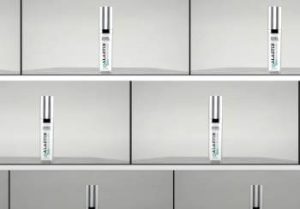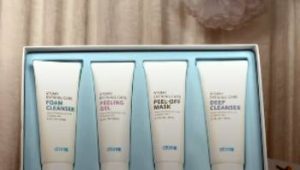As a new mom, I faced the daunting task of choosing a breast pump. Lansinoh Smartpump 3.0 and Spectra S2 kept popping up, both praised for efficiency and comfort.
Which one would suit my busy life? In this 3200-word journey, I share my experience testing both, comparing features, pros, and cons.
My goal is to help you pick the perfect pump for your breastfeeding needs, whether you’re pumping at home or work.
Let’s unpack the science and real-world results to guide your choice.
Comparison Table: Lansinoh Smartpump 3.0 Vs. Spectra S2
| Feature | Lansinoh Smartpump 3.0 | Spectra S2 |
| Pump Type | Double electric, closed system | Double electric, closed system |
| Weight | 1.1 lbs | 3.3 lbs |
| Power Source | Rechargeable battery, AC adapter | AC adapter only |
| Suction Strength | Up to 250 mmHg | Up to 270 mmHg |
| Cycle Speeds | 3 (expression mode) | 5 (expression mode) |
| Suction Levels | 8 | 12 |
| Portability | Cordless, lightweight | Corded, less portable |
| Noise Level | Moderate | Very quiet |
| App Connectivity | Bluetooth, Lansinoh Baby app | None |
| Cost | $120–$150 | $100–$159 |
| Flange Sizes | 25mm, 30.5mm, 21mm | 24mm, 28mm (20mm, 32mm sold separately) |
| Best For | Tech-savvy, on-the-go moms | Stationary, high-output pumping |
My Pumping Journey Begins
When my daughter was born, breastfeeding was my plan, but work loomed. I needed a reliable breast pump to keep up my supply.
Online forums buzzed about the Lansinoh Smartpump 3.0 and Spectra S2, both covered by my insurance.
Intrigued by Lansinoh’s app and Spectra’s reputation, I tested both for a month each, pumping 3–4 times daily.
My goal? Find a pump that’s efficient, comfortable, and fits my life as a working mom. Here’s what I discovered about these two heavyweights.
Breast pumps are game-changers for moms, letting us store milk for babies when we’re apart.
Double electric pumps like Lansinoh and Spectra save time by expressing milk from both breasts at once.
They’re ideal for frequent pumpers, offering customizable settings to mimic a baby’s natural sucking. Both use closed systems, preventing milk backflow into tubing for hygiene.
But their features—portability, suction, and tech—set them apart. Let’s break it down.
Lansinoh Smartpump 3.0: The Tech-Savvy Companion
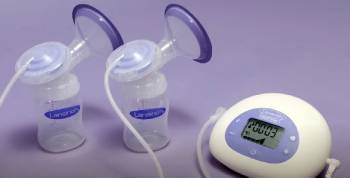
The Lansinoh Smartpump 3.0 arrived in a sleek box, promising comfort and convenience. At just 1.1 pounds, it’s compact (6 x 5 x 3 inches) and cordless, thanks to a rechargeable battery lasting about 2–3 sessions.
It offers three flange sizes (21mm, 25mm, 30.5mm) with soft ComfortFit rims, eight suction levels, and three expression cycle speeds, plus a letdown mode.
The Bluetooth-connected Lansinoh Baby app tracks sessions, milk output, and even diaper changes. It’s priced around $120–$150, often insurance-covered.
I started with the 25mm flanges, which fit well after some trial and error. The pump was easy to assemble, with dishwasher-safe parts. Pumping at work was a breeze—cordless, I used it hands-free with a pumping bra.
The app was a highlight, logging my 20-minute sessions and 4–6 ounces per side. I felt less bloated than with manual pumping, and the suction (up to 250 mmHg) was gentle yet effective.
However, the motor was louder than expected, noticeable in quiet settings, and the app occasionally disconnected, which was frustrating.
Lansinoh claims hospital-grade performance, but its suction is slightly lower than competitors like Spectra.
A 2022 study noted that pumps with 220–250 mmHg are sufficient for most moms, though exclusive pumpers may need more power.
The app’s lactation consultant access was a nice touch, though I didn’t use it. After a month, my supply stayed steady, and I appreciated the portability for my commute.
Also Read: My Thoughts On Aeroflow Breast Pump
Pros and Cons of Lansinoh Smartpump 3.0
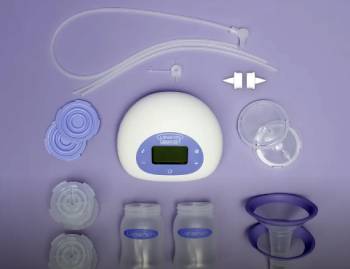
Pros of Lansinoh Smartpump 3.0
- Lightweight and cordless: Perfect for pumping on the go.
- App connectivity: Tracks sessions, output, and baby’s schedule.
- Comfortable flanges: Three sizes with soft rims reduce discomfort.
- Easy to clean: Dishwasher-safe parts save time.
Cons of Lansinoh Smartpump 3.0
- Noisier motor: Not ideal for discreet pumping.
- App glitches: Bluetooth can disconnect, disrupting tracking.
- Lower suction: 250 mmHg may not suit exclusive pumpers.
- Battery life: Needs recharging after 2–3 sessions.
Spectra S2: The Quiet Powerhouse

The Spectra S2, a hospital-grade pump, is a favorite in mom groups. It’s heavier (3.3 lbs) and larger (7.9 x 7.9 x 6.7 inches) than Lansinoh, requiring a constant plug-in with no battery.
It offers 24mm and 28mm flanges (20mm, 32mm sold separately), 12 suction levels, five cycle speeds, and a nightlight.
Suction reaches 270 mmHg, and it’s ultra-quiet. Priced at $100–$159, it’s often insurance-covered and includes a closed system for hygiene.
I set up the S2 at home, using the 24mm flanges. Assembly was straightforward, with eight parts to clean (not dishwasher-safe).
The first session blew me away—6 ounces per side in 15 minutes, and it felt like my daughter’s latch.
The quiet motor let me pump while she napped, and the nightlight was handy for 3 a.m. sessions.
I averaged 20–25 ounces daily, and my supply increased slightly. However, the cord tethered me to an outlet, limiting mobility, and the weight made it impractical for work.
Spectra’s higher suction and cycle options make it ideal for exclusive pumpers. A 2023 study found pumps with 250–300 mmHg and customizable cycles maximize output, especially for moms with supply issues.
Online reviews praise the S2’s efficiency, though some note it doesn’t fully empty breasts, requiring manual expression. For me, it was a powerhouse, but I missed Lansinoh’s portability.
Pros and Cons of Spectra S2
Pros of Spectra S2
- High suction: 270 mmHg boosts milk output.
- Ultra-quiet: Pump discreetly, even near a sleeping baby.
- Customizable: 12 suction levels, five cycle speeds for comfort.
- Hospital-grade: Reliable for frequent or exclusive pumping.
Cons of Spectra S2
- Corded: Must be plugged in, limiting mobility.
- Heavier: 3.3 lbs isn’t travel-friendly.
- More parts: Eight components to clean, not dishwasher-safe.
- Fewer flanges: Only two sizes included; extras cost more.
Also Read: My Experience With Freemie Rose Breast Pump
The Science: What Makes a Great Pump?
I dug into research to understand what drives pump performance. Suction strength (mmHg) and cycle speed (cycles per minute) are key.
Babies suck at 120–180 mmHg and 40–60 cycles per minute, so pumps mimic this.
Lansinoh’s 250 mmHg and three cycle speeds are solid for occasional pumpers, per a 2022 study, but Spectra’s 270 mmHg and five speeds better suit high-frequency use.
Closed systems in both prevent contamination, crucial for hygiene, as a 2021 study emphasized.
Portability matters for working moms. Lansinoh’s battery and 1.1-pound weight make it a commuter’s dream, while Spectra’s corded, 3.3-pound design suits stationary use.
Noise is another factor—Spectra’s near-silent motor (around 43 decibels) beats Lansinoh’s moderate hum (50–60 decibels), per user reviews.
App connectivity, unique to Lansinoh, aids tracking but isn’t essential, as manual logs work fine.
Both pumps support single or double pumping, saving time, with studies showing double pumping boosts output by 18%.
My Real-World Test
I pumped 3–4 times daily, aiming for 20–25 ounces. With Lansinoh, I loved the freedom to pump in my car or office without an outlet.
The app tracked my 4–6 ounces per side, and the soft flanges were comfy, though I switched to 21mm for a better fit. The noise was a drawback—coworkers noticed in our open office. My supply held steady, but I didn’t see an increase, and the battery died mid-session once, forcing a recharge.
Spectra was a beast at home. I hit 6–7 ounces per side in 15 minutes, and the quiet motor let me pump during naps.
The nightlight was a lifesaver for midnight sessions, and the 12 suction levels let me fine-tune comfort.
But I was tethered to the wall, and lugging 3.3 pounds to work wasn’t an option. Cleaning eight parts by hand was tedious compared to Lansinoh’s dishwasher-friendly setup. My supply crept up, likely due to the stronger suction.
Comparing Performance and Comfort
Lansinoh’s portability and app were game-changers for my on-the-go life. I pumped during commutes, saving 30 minutes daily.
The app’s data helped me spot patterns—like higher output in the morning. But the noise and occasional app disconnects annoyed me, and the suction felt less robust for my growing supply needs.
Spectra’s efficiency was unmatched. I felt “emptier” after sessions, and the extra ounce per side added up.
The quiet motor and nightlight made nighttime pumping peaceful, but the cord restricted me to one spot.
I missed Lansinoh’s cordless ease at work, and cleaning Spectra’s parts felt like a chore. For exclusive pumping, Spectra’s power won; for versatility, Lansinoh shone.
Lifestyle Fit: Which Pump Wins?
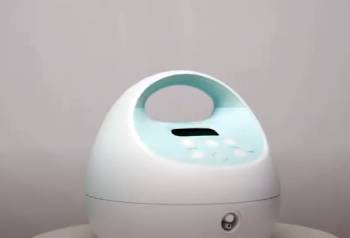
Your lifestyle dictates the better choice. Lansinoh Smartpump 3.0 is ideal for working moms or those pumping on the move.
Its battery, light weight, and app make it a multitasking marvel. I loved pumping hands-free while answering emails.
But if you’re sensitive to noise or need maximum suction, it might fall short.
The app’s tracking is handy but not flawless, and the battery needs planning.
Spectra S2 is a powerhouse for home-based or exclusive pumpers.
Its suction and quietness are top-tier, perfect for frequent sessions or supply boosting.
Moms in forums rave about its output, and I agree—it’s a workhorse. But the cord and weight limit its portability, and cleaning is a hassle. If you’re stationary and prioritize efficiency, it’s a no-brainer.
Making It Work: Tips for Success
Whichever pump you choose, flange fit is critical. A 2023 study found proper flange sizing boosts output by 20%.
Measure your nipple (not areola) and test sizes—Lansinoh’s 21mm saved me from discomfort.
Pump for 15–20 minutes, 3–4 times daily, to maintain supply. Massage breasts before and during to increase flow, per lactation experts.
Clean parts thoroughly to avoid contamination, and store milk in Lansinoh bags or Spectra bottles for convenience.
I found a pumping bra essential for hands-free use with both. Lansinoh’s dishwasher-safe parts saved time, but Spectra’s hand-washing was manageable with a dedicated brush.
Check insurance—both pumps are often free or low-cost. If you’re torn, start with Spectra for home and consider a portable Lansinoh for work, as I did.
Addressing the Hype
Breast pumps are hyped as breastfeeding saviors, but they’re tools, not miracles. Lansinoh’s “smart” label and app sound futuristic, but the tech isn’t foolproof.
Spectra’s hospital-grade status and quietness earn loyalty, but it’s not perfect for everyone.
User reviews on forums like BabyCenter praise Spectra’s output but note Lansinoh’s portability.
Neither will solve supply issues alone—hydration, rest, and frequent pumping are key, per a 2021 lactation study. Both worked for me, but lifestyle fit was everything.
Also Read: My Experience With Olivia Breast Pump
Frequently Asked Questions (FAQs)
No, Lansinoh Smartpump 3.0 isn’t hospital-grade, but its 250 mmHg suction is sufficient for most moms. Hospital-grade pumps typically exceed 300 mmHg for multi-user durability.
Yes, Spectra S2 can use Lansinoh bottles or bags with adapters, but flanges and tubing aren’t interchangeable due to different designs.
Yes, Spectra S2 is hospital-grade, designed for frequent use with a closed system and strong 270 mmHg suction, suitable for multiple users.
Lansinoh Smartpump 3.0 is great for portable, tech-savvy pumping with comfortable flanges and app tracking, but it’s noisier and less powerful than Spectra.
Final Thoughts
I’ve shared my pumping saga with Lansinoh Smartpump 3.0 and Spectra S2 to help you navigate this choice.
Lansinoh’s portability and app fit my on-the-go life, while Spectra’s power and quietness ruled at home.
You deserve a pump that matches your needs—whether it’s cordless convenience or maximum output.
Pick Lansinoh for mobility, Spectra for efficiency, or blend both for versatility.
With the right pump, you’ll conquer breastfeeding like a pro. What’s your next step? Grab a pump and start your journey!

